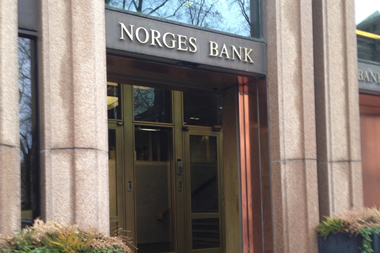Looking back at the history of Norway’s sovereign wealth fund, outgoing chief executive officer Yngve Slyngstad has praised Norwegian politicians for making courageous decisions and toughing out market swings without changing course.
Introducing a new report by Norges Bank Investment Management (NBIM) on the history of the Government Pension Fund Global (GPFG) and its management strategy, he said: “The Ministry of Finance and Norway’s politicians deserve credit for bold decisions at an early stage and for sticking to the course in challenging market conditions.”
Slyngstad – who was replaced as NBIM’s CEO a week ago by Nicolai Tangen – said that as a savings vehicle for future generations, the fund had a very long investment horizon, which had been reflected in the debate and the choices made over the years.
“Strategic decisions early on continue to play an important role,” he said in the report entitled “Investing with a mandate”.
It is the latest in a series of four 100-plus page historic management reviews the central bank arm has published this year, coinciding with the end of Slyngstad’s 12-year tenure as CEO.
The GPFG, known in Norway as the oil fund because it invests the country’s petroleum wealth, produced its highest annual return to date in 2009, in the early days of Slyngstad’s leadership, when it generated 25.6%.
This came just after the global financial crisis, when the fund ended 2008 with a 23.3% loss.
The SWF performed strongly after the financial crisis not least because NBIM was a huge buyer of stocks between June 2007 and early 2009, as it implemented the government-mandated increase in its equities allocation to 60% from 40%.
Slyngstad said in the report that the fund’s investment strategy over the years had been reflected in the choice of a benchmark index and a mandate requirement to follow this index closely.
“Important changes have, to the extent possible, been expressed as adjustments to the benchmark index,” he said.
Slyngstad, who is now taking on a new job at NBIM, said it had been important for the fund to be managed close to the index because of the need for public accountability.
“The index has ensured that the mandate is clear and the measurement of results beyond reproach,” he said.
“The preference has also been for liquid investments that can be represented by an index,” Slyngstad said, adding that the choice and evolution of the benchmark index had been ”rooted in long-term viability rather than any market view or circumstance”.
Under Slyngstad’s leadership, NBIM has made various recommendations to the Finance Ministry for its mandate to be changed to allow more unlisted investment and active management.
In the new review, Lise Lindbäck, NBIM’s global head of investment advice, said that while the fund’s benchmark index alone had defined its investment strategy for a long time, NBIM’s assignment was now broader.
“In some areas, the fund’s investments are compelled to deviate from the Norges Bank Investment Management benchmark index,” she said.
NBIM also invested in assets that were not suited to benchmark inclusion and made other adjustments to meet specific mandate requirements, she said.
“These decisions have a minor impact on the fund’s total return compared to the choices made in the design of the benchmark index, but they are still important with a fund of this size,” Lindbäck said.
The GPFG currently has NOK10.3trn (€963bn) in total assets.











No comments yet